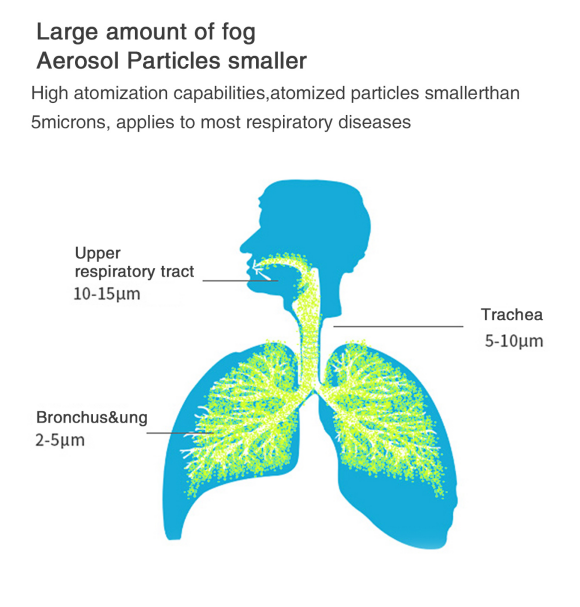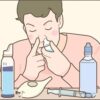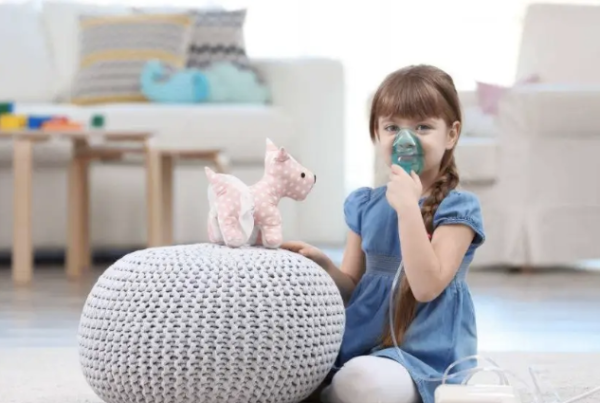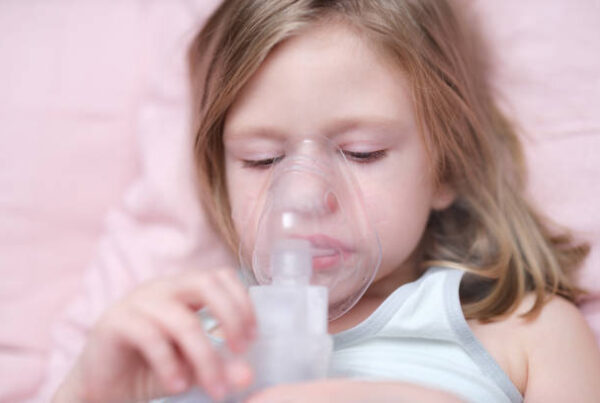6 Basic things you should know about nebulizer machine before taking order are:
1.What is nebulizer?
2.What is a nebulizer machine used for?
3.How to choose the right Nebulizer System? What’s the price ?
4.What’s the Difference Between a Nebulizer and an Inhaler?
5.How to use a nebulizer?
6.How to maintain and clean the nebulizer machine?
1. What is nebulizer
In medicine, a nebulizer is a drug delivery device used to administer medication in the form of a mist inhaled into the lungs.(from https://en.wikipedia.org/wiki/Nebulizer)
A nebulizer machine system includes a nebulizer device or medicine cup, a compressor, tubing, mouthpiece and tubing connectors.

2. What is a nebulizer machine used for?
Nebulizer turns the medication from liquid to mist so it will be much more easier for patients to inhaled the medicine straightly into the lungs.
People have asthma, chronic obstructive pulmonary disease (COPD), cystic fibrosis, bronchiectasis or other lung disease need nebulizer to take their medicine.
Sometimes, a doctor will prescribe a nebulizer for a child who has a respiratory infection, such as bronchiolitis.
Nebulized therapy is also called as “breathing treatment.” And a variety of medications — both for immediate relief and maintenance of asthma symptoms — are available for use with a nebulizer.

3. How to choose the right Nebulizer System? What’s the price ?
There are threee kinds of Nebulizer in the market, the Ultrasonic Nebulizer, the Compressor Nebulizer and Portable Nebulizer. Let me introduce all three for you so you can make the right decision.
Ultrasonic Nebulizer is the oldest technology, Compressor Nebulizer / Atomizer Jet Nebulizer is most common product and Portable Nebulizer is most convinience kind. The core technology is different for the three kind.
Portable Mesh Nebulizer : Mesh nebulizers are driven by a piezo-element and use ultrasonic frequencies to vibrate the mesh. The vibration of the mesh causes aerosol generation as the liquid passes through it.
Compressor Nebulizer/ Atomizer Jet Nebulizer : Jet nebulizers are connected by tubing to a compressor, that causes compressed air or oxygen to flow at high velocity through a liquid medicine to turn it into an aerosol
Ultrasonic Nebulizer : Ultrasonic nebulizer machine produce ultrasonic waves directly into the solution causing aerosol to be produced at the liquid surface.

But the real difference we should care is the Particle size of the medicine mist, because the smaller the size is, it will go deeper to our body.
Particle sizes from the nebulization process should ideally be in the range of 1 to 5 microns. Particles less than 1 micron will remain suspended in air and will not deposit within the bronchial tree. Particles greater than 5 microns tend to deposit in the upper respiratory tract.
- Ultrasonic Nebulizer : 5 to 3 microns
- Compressor Nebulizer/ Atomizer Jet Nebulizer : 2 to 5 microns
- Portable Mesh Nebulizer : 1 to 5 microns

| Nebulizers | Advantages | Disadvantages |
| Jet nebulizers with corrugated tubing | Cheap Easy to use Effective in delivering drugs that can |
Inefficient Difficult to clean Need compressed not be delivered with pMDIs and DPIs gas and additional tubing |
| Breath-actuated & Breath-enhanced jet nebulizers | Drug delivery only during inhalation Easy to use Less medication wasted More efficient than JNs with tubing |
Need sufficient flow to trigger drug delivery Takes longer to deliver drug Not ventilator-enabled More expensive |
| Ultrasonic nebulizers | Easy to use More efficient than jet nebulizer |
Large residual volume Inability to aerosolize viscous solutions Degradation of heat-sensitive materials |
| Mesh nebulizers | Fast, quiet, portable Self-contained power source Optimize particle size for specific drugs More efficient than other nebulizers Easy to use |
More expensive Cleaning can be difficult Medication dosage must be adjusted in transition from JNs Not compatible with viscous liquids or those that crystallize on drying |
Portable Mesh Nebulizer : If you ofen on the go, a portable nebulizer will be your choose, you can put it in your beg and use it whenever you need. The hand-held nebulizer is small in size, runs on battery and provides convenient portability.
Compressor Nebulizer/ Atomizer Jet Nebulizer : Compressor Nebulizer is the most popular kind with medical facilities. Stable and very suitable for home use.
Ultrasonic Nebulizer : Not recommend.

4. What’s the Difference Between a Nebulizer and an Inhaler?
Inhalers
Inhalers are portable, handheld devices that are available in two types:
Metered dose inhalers (MDI) are the most commonly prescribed. Like mini-aerosol cans, these devices push out a pre-measured spray of medicine. When the person squeezes the inhaler, a measured “puff” of medicine is released. Some MDIs have counters that indicate how many doses remain. If there’s no counter, the number of doses already used should be tracked, so that the inhaler can be replaced on time.
Kids who use a metered dose inhaler also might use a spacer, which attaches to the inhaler and makes it easier to use. A spacer is a kind of holding chamber for the medicine, which eliminates the need to closely coordinate squeezing the inhaler and inhaling the medicine. With an inhaler and spacer, the medicine can be inhaled slowly when the user is ready. So, it’s possible for very young kids and even babies to receive their medications using a metered dose inhaler with a spacer.
Spacers also make inhalers more effective. Sometimes with an MDI, the medicine will reach the back of the throat but not get down into the lower airways. A spacer helps to deliver the medicine into the lower airways, which is where it needs to go to work properly.
nebulizer machine
Nebulizers are electric- or battery-powered machines that turn liquid asthma medicine into a fine mist that’s inhaled into the lungs. The user breathes in the mist through a mouthpiece or facemask. Nebulizers vary in size and shape, but can be a bit bulky and noisy and may need to be plugged in.
A child doesn’t have to “do” anything to receive the medicine except stay in one place and accept the mouthpiece or facemask. It usually takes about 5 or 10 minutes to give medication by nebulizer, and sometimes longer. Nebulizers can be less effective if a child is crying during use, since less medicine will be inhaled.

5. How to use a nebulizer ?
There are two steps for using the nebulizer mechine, assemble the nebulizer and taking the treatment.
How to Assemble the Nebulizer and Air Compressor
- Place the compressor where it can safely reach its power source and where you can reach the ON/OFF switch.
- Wash your hands prior to preparing each treatment.
Use a clean nebulizer. - Measure the correct dose of medication and other solutions prescribed by your physician. Add these to the nebulizer.
- Connect the air tubing from the compressor to the nebulizer base.
- Attach a mouthpiece to the nebulizer.
How to use a nebulizer
- Wash the hands.
- Add the medicine to the medicine cup, according to the doctor’s prescription.
- Assemble the top piece, tubing, mask, and mouthpiece.
- Attach the tubing to the machine, according to the instructions.
- Turn the nebulizer on; they can be battery- or electrically powered.
While using the nebulizer, hold the mouthpiece and medicine cup upright to help deliver all the medication. - Take slow, deep breaths through the mouthpiece and inhale all the medicine.
If the Nebulizer Is Not Misting
- Check all connections.
- Refer to manufacturer’s instructions

6. How to maintain and clean the nebulizer
First of all, it’s very important to clean and maintain the nebulizer in the daily use, it’s not only for the personal health, the reminding medicine
Boiling Water
- Wash your hands.
- Take the nebulizer apart.
- Put all the parts of the PARI LC JET+ TM except the mask, tubing and interrupter in boiling water for 10 minutes.
- After boiling the nebulizer shake off any excess water
- Reattach the nebulizer pieces and tubing to the air compressor and turn on the compressor to dry the nebulizer quickly. Make sure the nebulizer is completely dry before storing the nebulizer.
- Vinegar and Water
Wash your hands.
- Soak all parts of the nebulizer (except mask, tubing and interrupter) for 1 hour in a solution of 1 part distilled white vinegar and 3 parts hot water. The solution should be fresh. Remove the parts from the vinegar solution and rinse them in water. Discard the solution.
- Shake off any excess water.
- Reattach the nebulizer pieces and tubing to the air compressor and turn on the compressor to dry the nebulizer quickly. Make sure the nebulizer is completely dry before storing the nebulizer.
- The tubing is replaced every two weeks because it is difficult to clean and dry properly.









Recent Comments